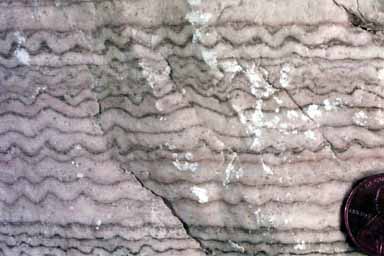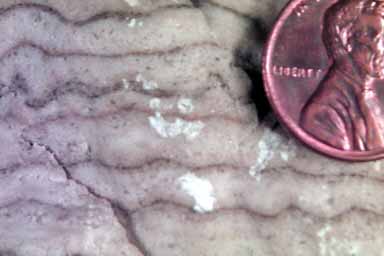igneous rocks
metamorphic
rocks
sedimentary rocks
|
Composition
CaSO 4 . H 2O; hardness 1.5-2; Cleavage perfect one direction, distinct in other two (when visible); white, colorless, gray, yellow, red, brown; Luster pearly on cleavages.
Description
Tectonic Association
None specific gypsum will form in any setting in which there is high evaporation of marine waters, and an absence of abundant clastic sediment to mask it.
Sedimentary gypsum forms under high evaporative conditions in sedimentary rocks, both clastic and carbonate. It usually requires desert conditions in shallow marine basins, or along coastal tidal flats. Gypsum commonly forms in association with halite and dolomite in Evaporation Basins. Sometimes the gypsum appears simply as Gypsum Roses in the sediment; other times it can form beds tens of feet thick.
Detail

Composition
CaSO 4 . H 2O; hardness 1.5-2; Cleavage perfect one direction, distinct in other two (when visible); white, colorless, gray, yellow, red, brown; Luster pearly on cleavages.
Description
Further Detail

Composition
CaSO4 . H2O; hardness 1.5-2; Cleavage perfect one direction, distinct in other two (when visible); white, colorless, gray, yellow, red, brown; Luster pearly on cleavages.
Description
Observe the white marks on the rock. These are places the rock has been damaged. The smudged white appearance is typical of gypsum when it has been powdered.
|